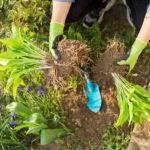Important Lawn Maintenance Projects for the Fall
It’s fall, and that means it’s time to start thinking about winter. But it also means you’ve got plenty of time to get your lawn ready for the next season. That’s what we’re going to talk about today: how to take care of your grass so that it stays healthy during the cold months ahead. We’ll cover everything from mowing to fertilizing and everything in between! Let’s dive right in…
Mowing
Mowing is an important lawn maintenance task. When you mow your lawn, you remove the dead grass blades, which allows air and water to reach the roots of the plant. This is especially important in fall because it will help prevent disease.
Mow your grass at the recommended height for your type of grass seed. Mow your lawn at least once a week during this time of year because if you let it grow too long (more than ¾ inch), it will be harder to cut down later when temperatures are cooler and dew is present on blades of grass each morning during the fall months ahead!
Make sure that you keep an eye on how much litter has accumulated around trees too as this can also cause damage over time such as causing rot or attracting pests like termites or ants who’ll try eating away at wooden structures from within!
Weeding
When it comes to weeding, the goal is simple: you want to get rid of weeds, but you don’t want to kill your grass or flowers. You can remove weeds with a digging fork or spade and replace them with new plants. If you’re looking for more permanent solutions, try using an herbicide as a last resort.
Mulching
Mulching is a great way to keep your lawn and landscaping looking its best all season. Mulch can help retain moisture in your soil and prevent weeds from growing, which means it will be less work for you during the spring.
Fertilizing
You should fertilize your lawn in the fall, just before the first frost. This will allow time for the nutrients to work their way into the soil before it freezes, so they’re available to help next year’s growing season. It’s also worth noting that some types of grasses prefer a cooler environment, so if you notice that your lawn is yellowing or drying out during summer months (indicating low levels of nitrogen), you may want to consider fertilizing earlier rather than later in the season.
When applying fertilizer for fall maintenance:
Be sure not to over-fertilize your lawn; this could cause damage by burning off existing grass blades and encouraging weeds instead of healthy new growth
Use slow-release granules instead of liquid formers when possible; this will save money because you won’t have to reapply as often
Sprinklers
As the weather cools and you start to see the first flurries, it’s time to think about turning off your lawn sprinklers. It might seem like a small detail, but not taking care of your sprinkler system can lead to all sorts of problems when spring rolls around again.
Here are some tips for maintaining your sprinkler system:
If you have a timer-based system, make sure that the timer is set correctly and functioning properly. Also check that all wires are in good condition and attached securely.
Clean out any debris from around the heads of each sprinkler so they don’t get clogged with dirt or mulch from rainstorms. Keep an eye on them throughout winter months; if they become clogged during cold spells and ice develops inside pipes, this could cause serious damage when spring arrives!
Aeration
Aeration (or core aeration) is the process of removing small plugs of soil from your lawn, allowing more oxygen and moisture to reach the roots. This improves its overall health, making it more resistant to disease and infestations. During the aeration process, you will see small holes left in your yard where grass plugs were removed. These holes need time to heal back over before you can walk on them—usually about one week if you’re doing things right—so be sure to make note of this when planning for aeration jobs during the fall season!
Remember: Aerating too often can cause compaction issues in your lawn’s root system which will hinder nutrient absorption and root growth. Ask your local landscaper how often you should be aerating based on how much foot traffic or animal activity that area receives throughout each year!
Fall is a great time to get your yard ready for winter, and these tips will help you do just that. Implementing the above lawn maintenance projects will not only help keep your yard looking nice but also ensure it’s protected from any damage caused by harsh weather conditions like snow or ice!



